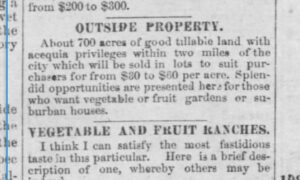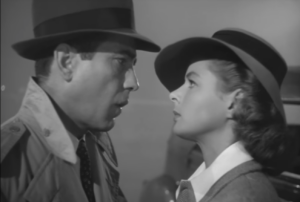
Agricultural heritage?
Welcome new readers!
With the current attention on the Colorado River’s crisis, I’ve had a great many people sign up for my blog feed in recent weeks. I’m so happy to have you join our Inkstain community! But an up front apology may be in order, as this might not be what you expected.
I’m John Fleck, a former journalist turned academic. I spent five years as director of the University of New Mexico Water Resources program, and I’ve recently joined the Utton Center, a natural resources policy group at the University of New Mexico School of Law, as the center’s Writer in Residence.
I’ve written a couple of books about the Colorado River, and at times I use this blog to perform a sort of “post-journalism”, sharing important stuff that I have learned. After 35+ years of daily journalism, it’s a hard habit to break.
I also have active collaborations with a group of friends and colleagues, and the blog is a great place to throw our stuff out into the information sphere when we think it might be of some use.
Ribbons of Green
I had every intention of putting my Colorado River work on simmer in 2022 – still available for snacking, but not the main meal. With my friend and colleague Bob Berrens, I’m hard at work on a new book about Albuquerque and the Rio Grande, a sort of environmental/institutional/literary work on how our community’s relationship with the river shaped both.
We’ve actually signed a contract. We have an actual deadline for the book.

Albuquerque Journal, Oct. 8, 1882
Bob and I teach graduate students in the University of New Mexico’s Water Resources Program and share tidbits like the old newspaper clip to the right, an 1882 real estate advertisement in which a chap named D.B. Emmert (“notary public, real estate and insurance broker”) is selling what seem to be the first explicitly advertised parcels of irrigated suburban land: “Splendid opportunities … for those who want vegetable or fruit gardens or suburban houses”).
The railroad had just arrived in Albuquerque, a moment of profound change that has delightfully weird water policy implications.
We’re fascinated by the cultural evolution of the valley in which we live, as we alternately battled with, and embraced, the Rio Grande, the river that flows through the midst of our town. As a matter of rhetoric and cultural identity, our community celebrates its “agricultural heritage”, but we’ve created more than a century’s distance between those hazy, romantic notions of that heritage and its reality – then and now.
That distance, and those notions, have critical implications for water policy today, which is what dragged Bob and I into this arena. “There’s less water. What do we do?” is the framing question for our students’ journey through the eclectic fall class about to get underway. For the tenth time! This is the tenth fall we’ve taught this class together!
Bodies in Lake Mead

Turns out Casablanca isn’t actually a desert! (I was misinformed.)
Unfortunately for my best-laid plans for 2022 (also, more importantly, for the 40 million people who depend on the Colorado River – my problems don’t amount to a hill of beans here), they’re finding dead bodies in Lake Mead. Because there’s not very much water in it. Which means less water for the people downstream who depend on it, or the people upstream who may or may not bear some responsibility for helping refill it.
This has captured a bit more of my attention this year than I had hoped, which is likely why, dear new readers, many of you have joined our little community. I’m a writer. I can’t help but write about what I’m thinking about. And I’m thinking about the Colorado River.
Sketchbook
This blog has always been my sketchbook – a habit I acquired from my late father, who was an active, productive artist his entire life. His sketchbooks were everpresent in our lives. The twist for me is that, as a lifelong newspaperman, I only know how to write in public. Journaling, diaries, have never worked for me. So when blogging emerged in Internet 1.0 days, I took to it.
I have no editor. There will be typos.
It is my fervent hope, dear new readers, that you’ll read a lot here in coming months about the gardens of early Albuquerque – the crazy early 20th century lawn irrigation patents and swamps-turned-tobacco farms-turned-boutique alfalfa stands.
It is my clear-eyed expectation that you’ll see a lot of my agonized musings about the dark, dead-bodies-in-Lake Mead trajectory of my beloved Colorado River.
It is my promise that, broken-down knee notwithstanding, you’ll still get a healthy dose of bike riding essays. (I just invested in an e-bike! My bad knee celebrates!)
Welcome!

About the bodies in Lake Mead, the mob guys were too lazy to dig a hole.
Also, is this a metaphor for the living if the River issues aren’t addressed as needed?
John
Well people change their crop from alfalfa to Kentucky blue grass. Nothing wrong with that if it increases the value of a home it is a a beneficial use.
I had heard the Boy Scout story from you (was it 15 years ago?) of going down the Colorado River from Blythe to Yuma. Had my own story but yours was masterful. Been hooked on your story telling ever since.
Kinda wish there was more up to date posts on the recent events of upper vs lower basin. Not much posted about the big decision by the feds
Kevin – Thanks so much for your interest. When I feel like I have something useful to add to the discussion, I will.